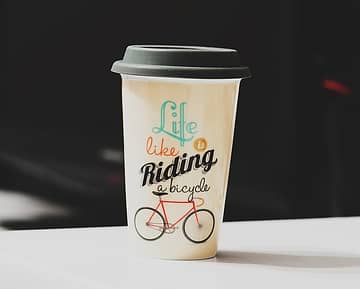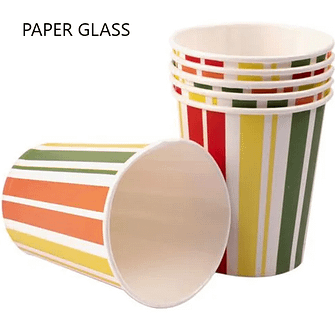
Title: Embracing Sustainability: The Rise of Paper Glass
Introduction:
In today’s world, where environmental concerns are at the forefront of global discussions, the need for sustainable alternatives to single-use plastic products has never been more critical. Among the growing list of eco-friendly alternatives, paper glass has emerged as a promising solution. This innovative and versatile creation offers a range of benefits while minimizing the harmful impact on the environment. In this article, we will delve into the world of paper glass, exploring its composition, advantages, and potential implications for a greener future.
Understanding Paper Glass:
Paper glass, as the name suggests, is a type of drinking cup made entirely from paper materials. It combines the convenience of disposable cups with the eco-friendliness of recyclable and compostable materials. These cups are typically lined with a thin layer of plant-based materials or biodegradable plastics to enhance their waterproofing capabilities and prevent leakage.
Advantages of Paper Glass:
- Environmental Sustainability: The most significant advantage of paper glass is its minimal environmental impact. Unlike conventional plastic cups, paper glass is made from renewable resources, such as wood pulp sourced from responsibly managed forests. They reduce reliance on non-renewable resources and decrease carbon emissions associated with plastic production.
- Biodegradability and Compostability: Paper glass is biodegradable and compostable, meaning it can naturally decompose over time. These cups break down into organic matter, which can be recycled in various ways, including composting. This characteristic minimizes the accumulation of waste in landfills and helps to conserve valuable landfill space.
- Reduced Energy Consumption: Paper glass manufacturing typically requires less energy compared to plastic cup production. The process of converting pulp into paper and forming it into cups consumes relatively fewer resources, making it a more sustainable choice.
- Versatility: Paper glass can be designed and customized to fit different sizes, shapes, and purposes. From hot beverages like coffee and tea to cold drinks like smoothies and sodas, these cups offer versatility and functionality without compromising the drinking experience.
- Consumer Perception: As sustainability becomes increasingly important to consumers, using paper cups can enhance a brand’s image. By adopting eco-friendly practices and offering paper glass alternatives, businesses can attract environmentally conscious customers who prioritize sustainability.
Implications for a Greener Future:
The widespread adoption of paper glass could have far-reaching implications for our planet’s sustainability. Here are a few potential benefits:
- Reduced Plastic Pollution: By substituting plastic cups with paper glass, we can significantly curb the amount of plastic waste that ends up in our oceans and ecosystems. This transition can help preserve marine life, protect fragile ecosystems, and promote a healthier environment for future generations.
- Circular Economy: Paper glass aligns with the principles of a circular economy, where resources are reused, recycled, or composted rather than discarded. By integrating paper cups into existing recycling and composting systems, we can establish a closed-loop system that maximizes resource efficiency and minimizes waste.
- Consumer Awareness and Behavioral Change: The use of paper glass can foster increased consumer awareness about sustainable choices and encourage individuals to adopt more environmentally friendly practices. It serves as a visible reminder to prioritize eco-conscious decisions and promotes responsible consumption.
Conclusion:
Paper glass represents a promising step towards a greener and more sustainable future. Its composition, biodegradability, and recyclability make it an excellent alternative to plastic cups, helping to mitigate plastic pollution and minimize environmental impact. As consumers and businesses alike become increasingly aware of the importance of sustainability, embracing paper glass can be a significant stride towards reducing our ecological footprint. By choosing paper glass, we contribute to a healthier planet and set the stage for a more environmentally conscious society.
When it comes to paper glass, there are various types available to suit different needs and preferences. Let’s explore some of the common types of paper glass:

1. Single-Wall Paper Cups: Single-wall paper cups are the most basic and widely used type of paper glass. These cups consist of a single layer of paper with a polyethylene (PE) coating or a plant-based biopolymer lining on the inside to provide waterproofing. Single-wall cups are suitable for serving both hot and cold beverages, such as coffee, tea, soft drinks, and water.
2. Double-Wall Paper Cups: Double-wall paper cups offer enhanced insulation compared to single-wall cups. They consist of two layers of paper with a layer of air or insulating material in between. The additional layer provides better heat retention, making double-wall cups ideal for serving hot beverages like coffee, cappuccino, or hot chocolate. The outer layer of double-wall cups remains cool to the touch, offering better comfort while holding the cup.
3. Ripple-Wall Paper Cups: Ripple-wall paper cups are designed with a unique textured layer between the inner and outer layers of paper. This ripple effect provides increased insulation and a better grip, making them a popular choice for hot drinks. The added insulation reduces the need for cup sleeves or double-cupping, enhancing convenience for both the consumer and the environment.
4. PLA-Coated Paper Cups: Polylactic acid (PLA) is a plant-based biopolymer derived from renewable resources such as corn starch or sugarcane. PLA-coated paper cups feature a lining made from PLA instead of traditional polyethylene. These cups are compostable and offer an eco-friendly alternative to conventional plastic-coated cups.
5. Compostable Paper Cups: Compostable paper cups are manufactured using materials that can break down and decompose into organic matter within a specific timeframe under composting conditions. These cups often meet stringent compostability standards, such as the ASTM D6400 or EN 13432 certifications. Compostable paper cups are designed to be processed in commercial composting facilities, contributing to a circular economy by diverting waste from landfills.
6. Customized or Branded Paper Cups: Many businesses opt for customized or branded paper cups to enhance their brand identity and create a unique customer experience. These cups can be printed with company logos, messages, or artwork, making them a powerful marketing tool. Customized paper cups can be made in various sizes and styles, including single-wall, double-wall, or ripple-wall cups, depending on the specific requirements.
It’s important to note that while paper cups offer more sustainable alternatives to traditional plastic cups, proper disposal is crucial to maximizing their environmental benefits. Recycling, composting, or utilizing appropriate waste management systems can ensure that paper cups are given a second life or returned to the ecosystem in an eco-friendly manner.




